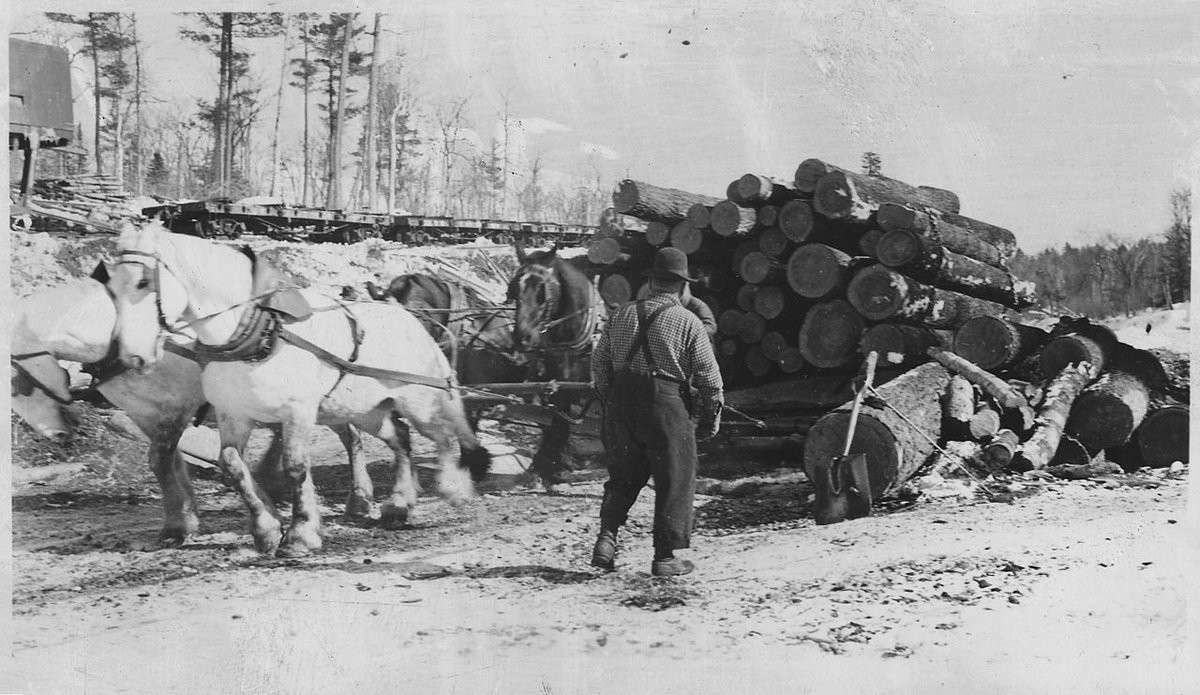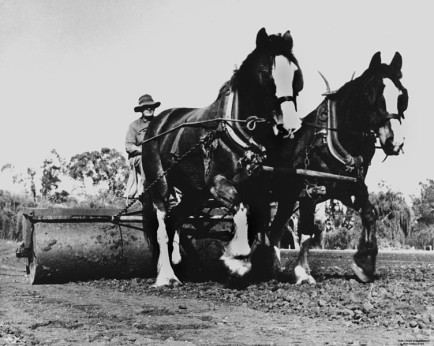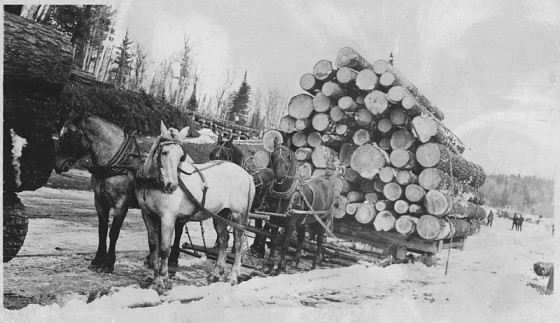A pair of Shires once pulled 50 tons, or the equivalent of a semi truck, plus an additional 20,000 pounds.

According to author Donna Campbell Smith, The Book of Draft Horses: The Gentle Giants That Built the World, in 1924 a pair of Shire draft horses pulled 50 tons (100,000 pounds), which is 20,000 pounds more than the weight of a semi truck. Other sources we found recorded that they pulled only 45 tons. Only. Either way, that’s a lot of weight.
That same year, another Shire single-handedly, or single-hoofedly, pulled 29 tons (58,000 pounds) – the combined weight of three full-grown male African elephants and then some. The horse in question was from Liverpool and shod in that city’s preferred horseshoe style at the time, which meant he was basically wearing cleats. Still, that’s some impressive pulling power.
Draft horses were bred for big jobs, and the Shire”“generally considered the largest and heaviest of the bunch”“is no slouch in this department. The males’ average height is about five-foot-seven and they weigh in at about 1,800 pounds, but they can get even bigger. The breed originated in the lowlands of eastern England, mainly in Lincolnshire, Warwickshire, Leicestershire, Northamptonshire, and Cambridgeshire. (Understand why they’re named “Shire” now?) Heavier horses from northern Europe were brought to England in the 15th and 16th centuries and bred with smaller English horses in order to produce an animal strong enough to handle carrying a knight in a full suit of armor. This new breed was called the Great Horse or War Horse, according to the Shire Horse Society of England. Today’s Shire horses are believed to be the closest relatives to these bad boys, albeit with some additional breeding in the 1700s by an English agronomist named Robert Bakewell (who also developed Leicester sheep) for use in farming.
Draft horses, of all stripes (there are quite a few breeds, including, Clydesdales, Belgians, Brabants, Percherons, and the Suffolk Punch, among others) were invaluable in the 19th century when industrialization went hand-in-hand with the need to haul logs, beer, and newer, larger farm implements. The early 20th century saw the rise of draft-horse pulling contests, mostly at agricultural fairs, which continue today and have helped scientifically nail down just how strong these creatures really are.
If you’re the kind of person who needs a little visual proof before you’ll accept the facts, we’ve rounded up some photos and a video of draft horses in action.

Car with a busted engine? You bet! A Canadian couple’s car, sans engine, is hauled off during the Great Depression. Glenbow Archives via Wikimedia

Massive farm equipment? They got that! John Oxley Library, State Library of Queensland via Wikimedia

Street tram? Pu-lease! A draft horse makes easy work of this vehicle on the Isle of Man. Andrew R Abbott via Wikimedia
And finally check out this pair, hauling 12,500 pounds at the Darke County Fair:

Werry good
And people think they can’t pull carriages that weigh 2,000 to 3,000 pounds.